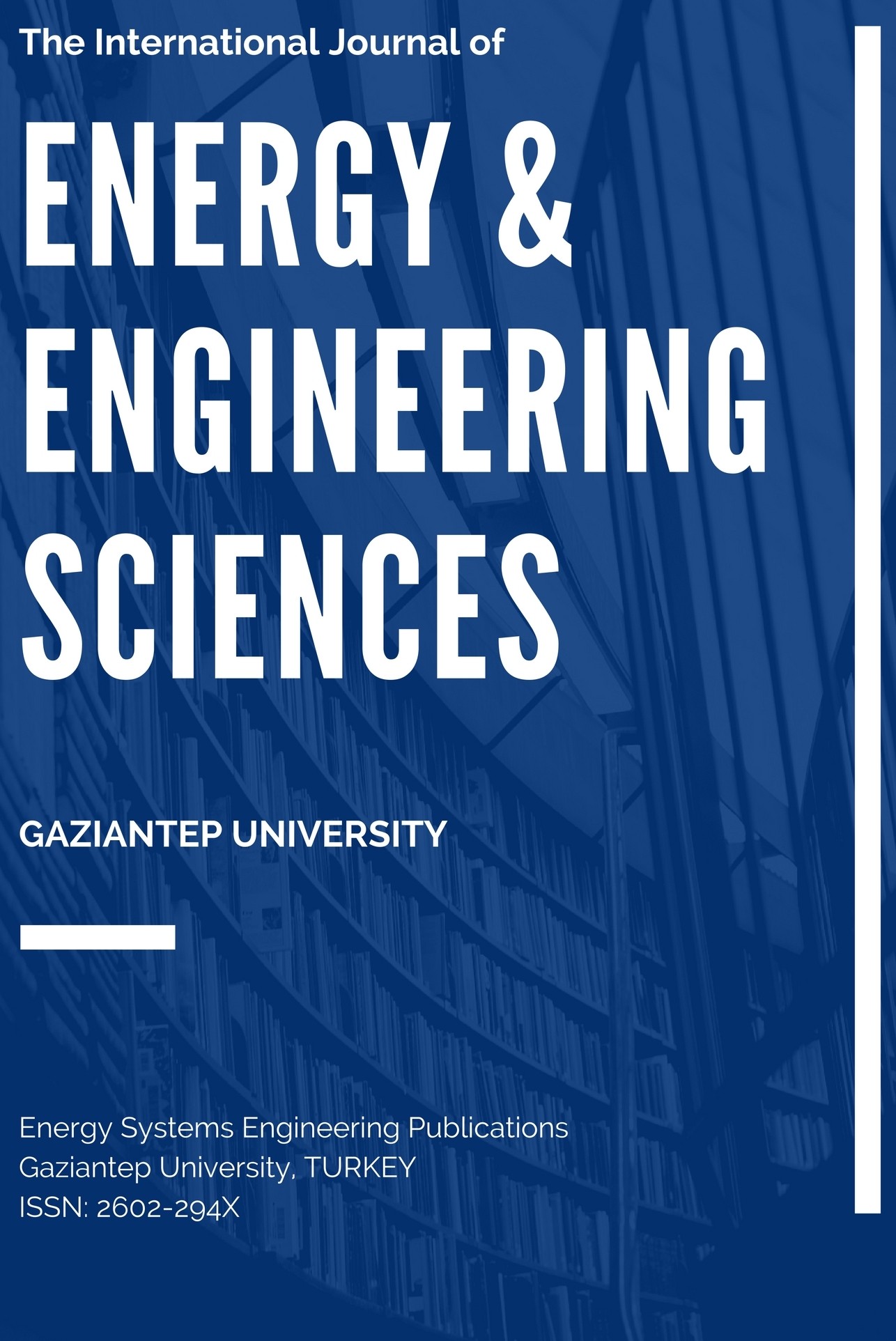COMPARISON OF AISC 360 – 16 AND EC4 FOR THE PREDICTION OF COMPOSITE COLUMN CAPACITY
COMPARISON OF AISC 360 – 16 AND EC4 FOR THE PREDICTION OF COMPOSITE COLUMN CAPACITY
Composite columns, CFST column Axial capacity, ANSI/AISC 360 – 16, EC4,
___
- Abed, F., AlHamaydeh, M., and Abdalla, S. (2013). Experimental and numerical investigations of the compressive behavior of concrete filled steel tubes (CFSTs). Journal of Constructional Steel Research, 80, 429-439. doi: 10.1016/j.jcsr.2012.10.005
- AISC360-16. (2016). ANSI/AISC 360-16 Specification for Structural Steel Buildings (pp. 676). Chicago, Illinois, USA: American institute of steel construction.
- An, Y.-F., Han, L.-H., and Zhao, X.-L. (2012). Behaviour and design calculations on very slender thin-walled CFST columns. Thin-Walled Structures, 53, 161-175. doi: 10.1016/j.tws.2012.01.011
- Aslani, F., Uy, B., Tao, Z., and Mashiri, F. (2015). Predicting the axial load capacity of high-strength concrete filled steel tubular columns. Steel and Composite Structures, 19(4), 967-993. doi: 10.12989/scs.2015.19.4.967
- de Oliveira, W. L. A., De Nardin, S., de Cresce El Debs, A. L. H., and El Debs, M. K. (2009). Influence of concrete strength and length/diameter on the axial capacity of CFT columns. Journal of Constructional Steel Research, 65(12), 2103-2110. doi: 10.1016/j.jcsr.2009.07.004
- EC4. (2004). EN1994-1-1Eurocode4. DesignofCompositeSteelandConcreteStructures-Part 1-1:General Rules and Rules for Buildings (pp. 117). CEN, Brussels: European Committee for Standardization.
- Ekmekyapar, T., and Al-Eliwi, B. J. M. (2016). Experimental behaviour of circular concrete filled steel tube columns and design specifications. Thin-Walled Structures, 105, 220-230. doi: 10.1016/j.tws.2016.04.004
- Giakoumelis, G., and Lam, D. (2004). Axial capacity of circular concrete-filled tube columns. Journal of Constructional Steel Research, 60(7), 1049-1068. doi: 10.1016/j.jcsr.2003.10.001
- Han, L.-H., Li, W., and Bjorhovde, R. (2014). Developments and advanced applications of concrete-filled steel tubular (CFST) structures: Members. Journal of Constructional Steel Research, 100, 211-228. doi: 10.1016/j.jcsr.2014.04.016
- Han, L.-H., Yao, G.-H., and Zhao, X.-L. (2005). Tests and calculations for hollow structural steel (HSS) stub columns filled with self-consolidating concrete (SCC). Journal of Constructional Steel Research, 61(9), 1241-1269. doi: 10.1016/j.jcsr.2005.01.004
- Johansson, M. (2002). The efficiency of passive confinement in CFT columns. Steel and Composite Structures, 2(5), 379-396. doi: 10.12989/scs.2002.2.5.379
- Le Hoang, A., and Fehling, E. (2017). Numerical study of circular steel tube confined concrete (STCC) stub columns. Journal of Constructional Steel Research, 136, 238-255. doi: 10.1016/j.jcsr.2017.05.020
- Li, N., Lu, Y.-Y., Li, S., and Liang, H.-J. (2015). Statistical-based evaluation of design codes for circular concrete-filled steel tube columns. Steel and Composite Structures, 18(2), 519-546. doi: 10.12989/scs.2015.18.2.519
- Liang, Q. Q. (2014). Analysis and Design of Steel and Composite Structures: CRC Press.
- Portolés, J. M., Romero, M. L., Bonet, J. L., and Filippou, F. C. (2011). Experimental study of high strength concrete-filled circular tubular columns under eccentric loading. Journal of Constructional Steel Research, 67(4), 623-633. doi: 10.1016/j.jcsr.2010.11.017
- Schneider, S. P. (1998). Axially loaded concrete-filled steel tubes. Journal of Structural Engineering, ASCE 124(10), 1125-1138.
- Shanmugam, N., and Lakshmi, B. (2001). State of the art report on steel–concrete composite columns. Journal of Constructional Steel Research, 57(10), 1041-1080.
- Yang, H., Lam, D., and Gardner, L. (2008). Testing and analysis of concrete-filled elliptical hollow sections. Engineering Structures, 30(12), 3771-3781. doi: 10.1016/j.engstruct.2008.07.004
- Yu, Q., Tao, Z., and Wu, Y.-X. (2008). Experimental behaviour of high performance concrete-filled steel tubular columns. Thin-Walled Structures, 46(4), 362-370. doi: 10.1016/j.tws.2007.10.001
- ISSN: 2602-294X
- Yayın Aralığı: Yılda 2 Sayı
- Başlangıç: 2016
- Yayıncı: Gaziantep Üniversitesi
ANALYSIS OF THERMAL TRANSPORT THROUGH A FLAT-PLATE SOLAR COLLECTOR INTEGRATED WITH METAL-FOAM BLOCKS
Ahmed ALBOJAMAL, Arman HAGHIGHI, Hudhaifa HAMZAH
DEVELOPMENT OF REMOTE CONTROLLABLE POWER STRIP FOR HOME ENERGY MANAGEMENT THROUGH WEB-SERVICES
Aymen Husam ALADHAMİ, Ergun ERÇELEBİ
COMPARISON OF AISC 360 – 16 AND EC4 FOR THE PREDICTION OF COMPOSITE COLUMN CAPACITY
Baraa J.m AL-ELİWİ, Talha EKMEKYAPAR, Hussein A.M.S. AL-JUBOORİ
Ali Kadhim H. ALHUSSAINAWE, Farid H. ARNA'OT, Ahmmad A. ABBASS, Mustafa OZAKCA
EFFECT OF STEAM CURING BY SOLAR ENERGY ON THE MECHANICAL STRENGTH AND DURABILITY OF CONCRETES
